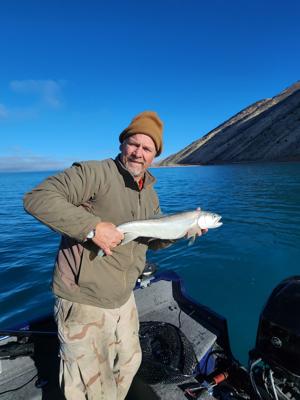Trolling — the use of a boat’s movement to propel a fly or lure — is an under appreciated method of fishing in this region. This is partly due to the method requiring the ownership of a boat. Over the last decade this hurdle has been partially removed as an increasing number of inexpensive personal watercraft devices, float tubes, pontoon boats and kayaks, have become available for purchase.
Another reason this technique is seldom discussed is many anglers don’t think trolling involves much skill. The assumption seems to be that the angler is simply puttering around a lake in the hope that their lure’s path will intercept a fish. While this is true, a successful troller can tip the odds in their favor by understanding how location, depth, speed and lure choice alters success.

You can’t overstate the importance of location. A large proportion of a lake’s area will hold few fish, but there are locations where these aquatic denizens congregate. Most species move to shallow water during parts of the year, as this is where high concentrations of food are found.
Trout occupy shallow water in the spring, late fall and at crepuscular times. By contrast, catfish and walleye occupy these littoral zones during early summer and nights. In many local lakes and reservoirs, the most complex shallow habitats are near the shorelines.
Variation in the lake bottom and the presence of aquatic vegetation, however, can make areas near shore difficult to troll. This necessitates troll.

























